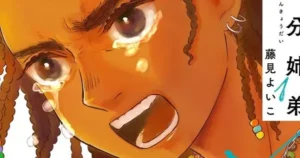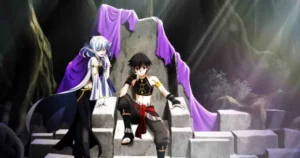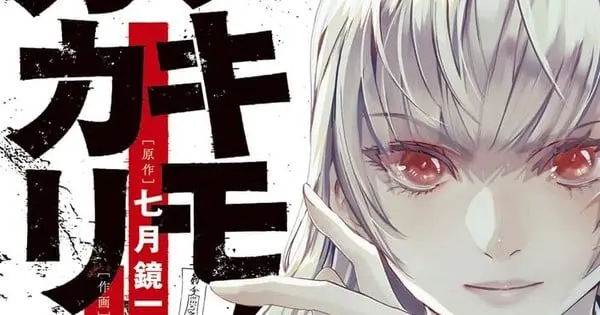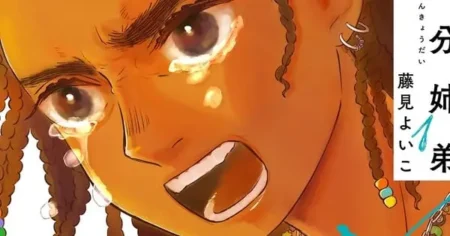The manga series “Tsukimonogakari,” created by Kyoichi Nanatsuki and illustrated by Manyo Asahi, has reached its conclusion. The final chapter was published on Shogakukan’s Sunday Webry manga app on Saturday, January 25, 2025.
Series Finale Confirmed by Nanatsuki
Kyoichi Nanatsuki, known for his work on “Project ARMS,” confirmed the ending of “Tsukimonogakari” via their X (formerly Twitter) account, stating that the 17th chapter, specifically part 2, would be the series’ last.
“Tsukimonogakari” Overview
The manga, which launched in October 2022, revolves around the “7th Division,” a newly established police unit tasked with handling supernatural cases. These cases involve criminals possessed by evil spirits (Tsukimono). The story follows a group of young police officers with special abilities as they collaborate to solve these unusual and dangerous crimes.
Premise of the Manga
The core concept of “Tsukimonogakari” blends police procedural elements with supernatural horror. The 7th Division acts as a specialized unit dealing with crimes that conventional law enforcement cannot explain or combat. This premise allows for unique storytelling opportunities, exploring themes of possession, the spirit world, and the ethical considerations of dealing with individuals influenced by malevolent entities.
Characters and Their Abilities
The manga focuses on a team of young officers, each possessing distinct abilities that aid them in their investigations. These powers likely range from detecting spiritual presences to exorcising evil spirits or even communicating with the supernatural realm. The interactions and dynamics between these characters as they learn to work together and master their abilities are central to the narrative.
Publication Details
“Tsukimonogakari” was serialized on Shogakukan’s Sunday Webry, a digital manga platform. Shogakukan has also compiled the series into collected volumes (tankoubon):
- Volume 1: July 2023
- Volume 2: November 2023
- Volume 3: July 2024
The manga spanned 17 chapters, culminating in the final installment released in January 2025.
Kyoichi Nanatsuki: Background and Notable Works
Kyoichi Nanatsuki is a renowned manga writer with a career spanning several decades. He is best known for co-creating “Project ARMS” with artist Ryōji Minagawa. “Project ARMS” was serialized in Weekly Shonen Sunday from 1997 to 2002 and gained international recognition.
“Project ARMS”
“Project ARMS” is a science fiction action manga that tells the story of teenagers who possess powerful nanomachines called ARMS within their bodies. These ARMS grant them superhuman abilities, making them targets for various organizations seeking to control their power. The series is known for its intricate plot, complex characters, and intense action sequences.
“Project ARMS” Anime Adaptations
“Project ARMS” was adapted into a 26-episode anime television series in 2001, followed by a 26-episode sequel titled “Project ARMS: The 2nd Chapter” in 2001-2002. The anime adaptation covered the major plot points of the manga, bringing Nanatsuki’s storytelling to a wider audience.
Other Works by Nanatsuki
In addition to “Project ARMS” and “Tsukimonogakari,” Nanatsuki has worked on other manga titles, including “Dragon Bugyō.” This demonstrates his versatility as a writer, exploring different genres and themes throughout his career.
Manyo Asahi: The Artist Behind “Tsukimonogakari”
Manyo Asahi is the artist who brought Kyoichi Nanatsuki’s vision to life in “Tsukimonogakari.” While information about Asahi’s other works is less readily available, their art style in “Tsukimonogakari” effectively captures the supernatural elements and the characters’ emotions.
Reception and Impact
While it is difficult to gauge the full reception of “Tsukimonogakari” without specific sales figures or critical reviews, the fact that it ran for over two years and was compiled into three volumes suggests that it garnered a dedicated readership. The manga’s unique blend of police procedural and supernatural themes likely appealed to fans of both genres.
The Appeal of Supernatural Crime Stories
The popularity of “Tsukimonogakari” reflects a broader trend in fiction: the appeal of stories that blend crime and investigation with supernatural or paranormal elements. This combination allows for creative storytelling possibilities, exploring the boundaries of reality and challenging conventional notions of justice.
Examples in Other Media
Numerous examples of this genre exist in various media:
- “Supernatural” (TV Series): Two brothers hunt demons, ghosts, and other supernatural creatures while solving mysteries along the way.
- “The X-Files” (TV Series): FBI agents investigate unexplained phenomena and paranormal cases.
- “Hellboy” (Comics and Films): A demon works for a secret government agency to protect the world from supernatural threats.
- “Constantine” (Comics, Films, and TV Series): An occult detective investigates supernatural crimes and battles demonic forces.
These examples demonstrate the enduring popularity of stories that combine the intrigue of crime-solving with the excitement and mystery of the supernatural.
The Significance of Sunday Webry
“Tsukimonogakari” being serialized on Shogakukan’s Sunday Webry is also noteworthy. Digital manga platforms like Sunday Webry have become increasingly important in the manga industry, providing opportunities for creators to reach a wider audience and experiment with different storytelling formats. These platforms often feature a diverse range of genres and styles, catering to various reader preferences.
Advantages of Digital Manga Platforms
- Accessibility: Digital platforms make manga more accessible to readers worldwide, removing geographical barriers.
- Cost-Effectiveness: Digital manga is often cheaper than physical copies, making it more affordable for readers.
- Discoverability: Digital platforms can help new and emerging manga artists gain exposure and build a fanbase.
- Interactive Features: Some platforms offer interactive features like commenting, ratings, and community forums, enhancing the reading experience.
Potential Themes and Interpretations
“Tsukimonogakari,” with its premise of police officers dealing with supernatural crimes, likely explores several themes:
- Justice and Morality: How does one apply the principles of justice when dealing with individuals possessed by evil spirits? What are the ethical considerations of punishing someone who is not fully in control of their actions?
- The Nature of Evil: The manga could delve into the nature of evil, exploring its origins, motivations, and manifestations.
- Human Vulnerability: The concept of possession highlights human vulnerability to external forces, both physical and spiritual.
- Teamwork and Collaboration: The success of the 7th Division depends on the officers’ ability to work together, trust each other, and leverage their individual strengths.
- The Unknown: The manga explores the fear and fascination associated with the unknown, challenging readers to consider the possibility of a world beyond human comprehension.
The Ending and What It Could Mean
The conclusion of “Tsukimonogakari” after 17 chapters could be interpreted in several ways. It might indicate that the creators had a specific story arc in mind and reached a natural ending point. Alternatively, it could reflect the challenges of maintaining a consistent readership in the competitive manga market.
Regardless of the reasons behind the ending, “Tsukimonogakari” leaves behind a unique contribution to the supernatural crime genre. Its blend of police procedural elements, supernatural horror, and compelling characters likely resonated with readers who appreciate stories that push the boundaries of reality and explore the darker aspects of the human condition.
Conclusion: A Concise but Intriguing Series
While “Tsukimonogakari” may have had a relatively short run, it offered an intriguing premise and a unique perspective on the intersection of law enforcement and the supernatural. The collaboration between Kyoichi Nanatsuki and Manyo Asahi resulted in a manga that likely captivated readers with its blend of mystery, action, and supernatural elements. The series’ conclusion marks the end of a chapter, but it also leaves room for fans to reflect on the themes and characters that made “Tsukimonogakari” a memorable addition to the manga landscape.









